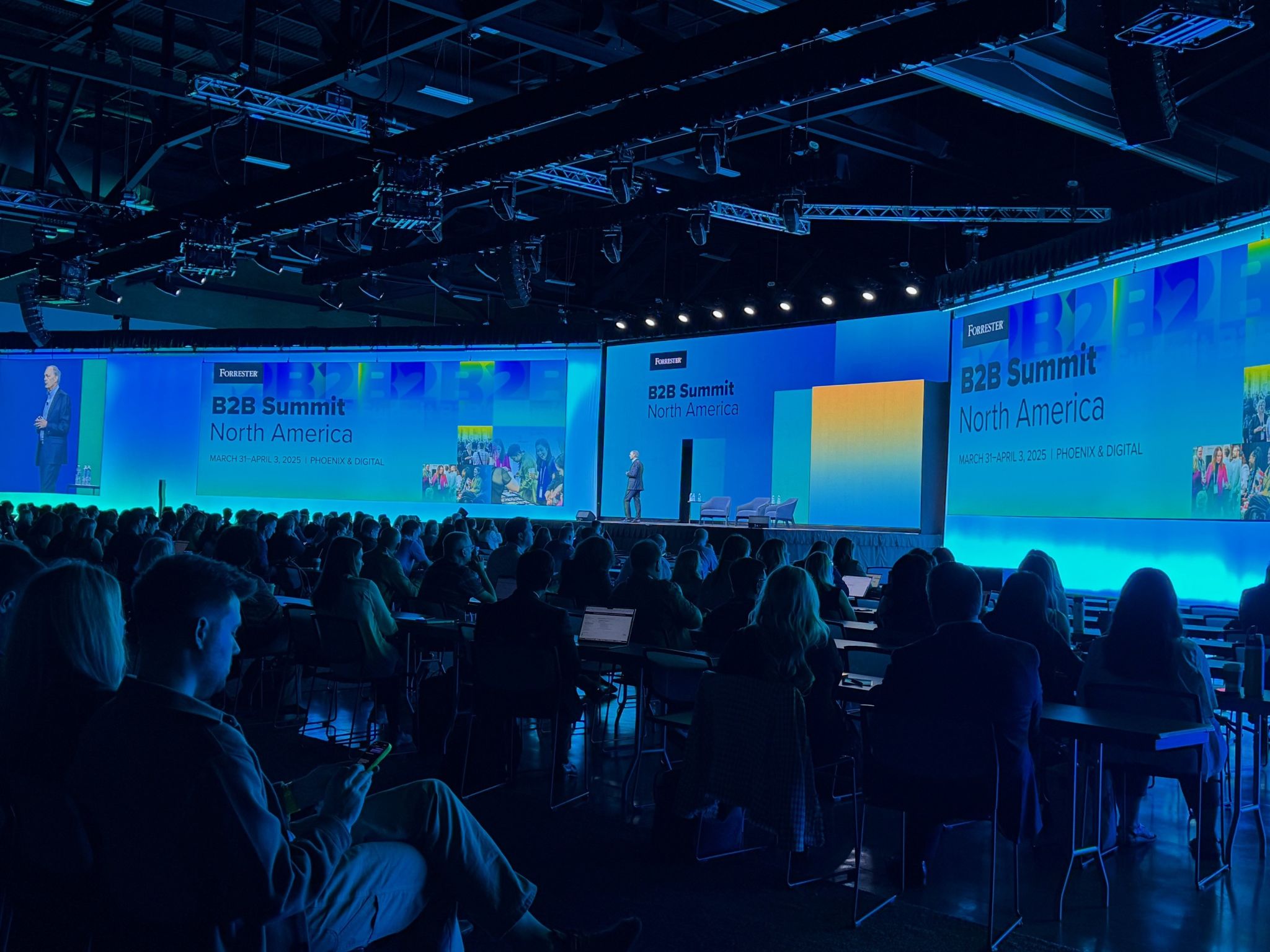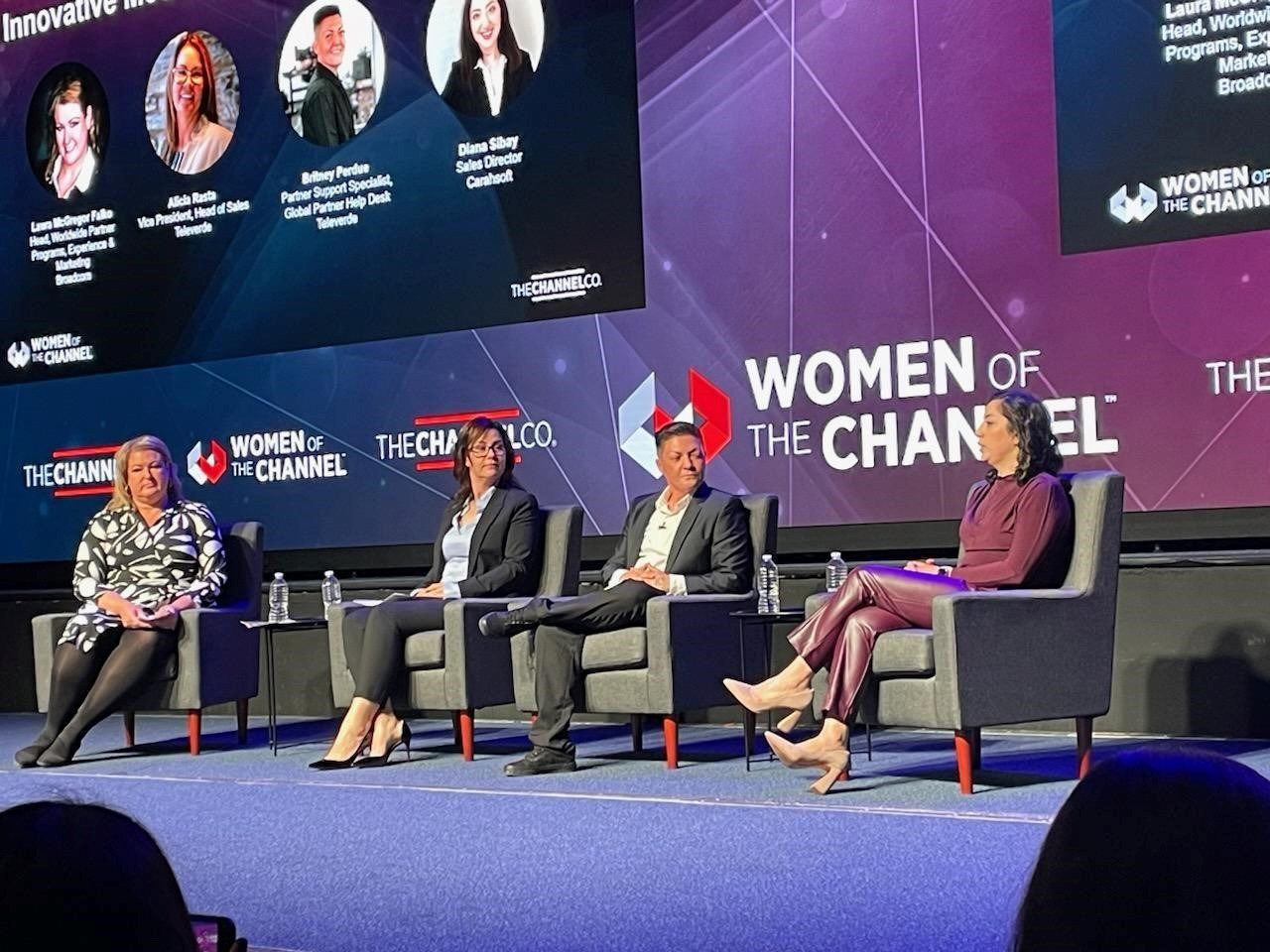Lessons in Connection from Forrester B2B Summit
This year’s Forrester B2B Summit was back in Phoenix, our own backyard, and I was genuinely excited to attend for the first time. It had been years since the event was last held here, and being able to go to such an incredible event without hopping on a plane made it feel that much more special. As someone who’s constantly looking to grow, learn, and challenge myself, the Summit delivered in all the right ways. After a week of catching up with colleagues, clients, and the folks I connected with during the event, I have some insights from the event I’d like to share.
One of the big themes from the Summit that immediately grabbed my attention was the idea that we’re no longer selling into “buying groups,” we’re selling into buying networks. That shift sounds subtle, but it’s massive in its implications. Buying networks include everyone who is touched by a decision, not just the economic buyers and influencers. That means reaching people we might not have considered part of the conversation and ensuring the value we bring is clear across the entire organization.
The evolution of AI was another big thread running through nearly every session. What stood out most to me was how fast AI is becoming a key research tool for buyers. One speaker shared that AI is now emerging as a “second channel” for product evaluation. People aren’t just Googling anymore—they’re prompting large language models for tailored answers, skipping straight past our websites and messaging. That really made me think: if our content isn’t open, accessible, and clearly useful, we’re not going to show up where buyers are looking.
What also landed for me was the conversation around how we implement AI. There’s a growing mistrust around AI interactions, especially when companies aren’t transparent about using bots or automated tools. It’s not about replacing humans, but reducing friction in ways that are most helpful to humans. One of the best pieces of advice I heard was to be AI-driven, not AI-first. It’s a subtle difference, but an important one. When we prioritize people first and use AI as a tool (not the answer), we build more trust and connection.
“Don’t focus on the technology—focus on the friction points” was a quote from one of the sessions that stuck with me. It’s not about the tools we have; it’s about the problems we’re solving and the outcomes we’re delivering. That philosophy aligns with what we try to do every day: understand pain points, streamline complex processes, and show customers what’s possible on the other side of their challenges.
The Forrester analyst-led sessions and roundtables were insightful and full of real, applicable guidance. Outside of the keynotes and analyst sessions, I found the most valuable conversations happened in the hallways, over coffee, or at evening socials. That’s where you connect with people in a more natural, human way. There’s less pressure, more curiosity, and a greater chance to really hear and be heard.
Perhaps the one statistic I heard that impacted me the most was that 91% of buyers—even those who’ve already selected a vendor—still want an improved customer experience. That’s nearly everyone. It tells us that closing the deal isn’t the finish line; it’s just the beginning. People are staying loyal to vendors out of convenience or history, but they’re still open to something better. That creates a massive opportunity for all of us to show up with more empathy, more clarity, and more value.
In the end, what I walked away with wasn’t just a stack of notes and screenshots (though I have plenty of those too). I left with a renewed perspective on how to serve people better, tuning into what they’re really asking, showing up with purpose, and solving problems that matter.
I’m grateful I got to attend, for the conversations that challenged my thinking, and excited to apply what I learned. It’s events like this that remind me why I love what I do.


